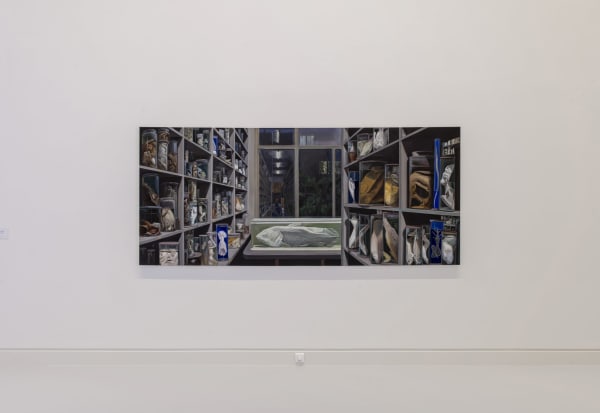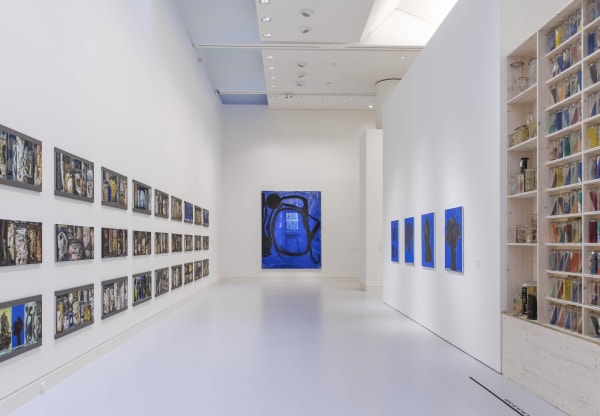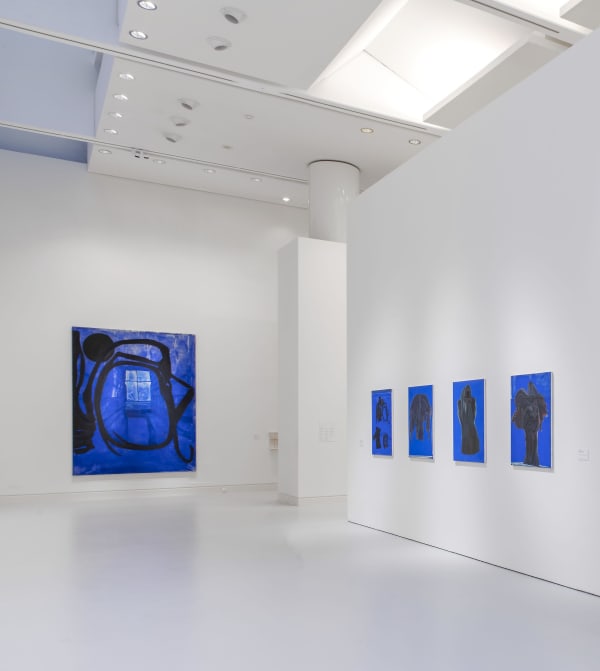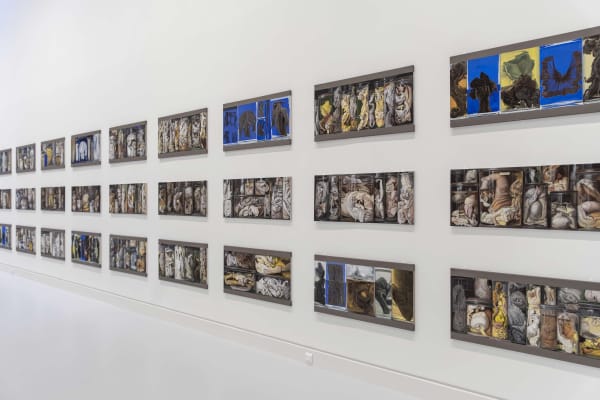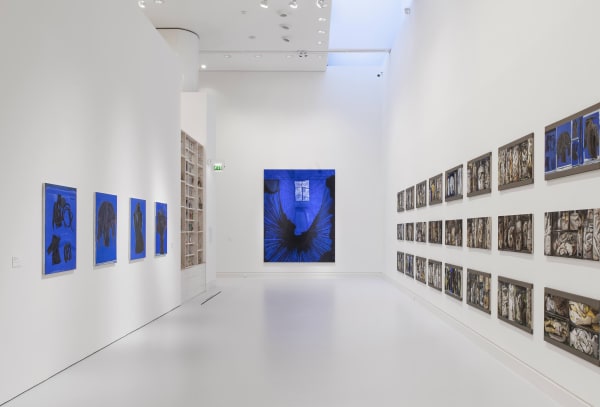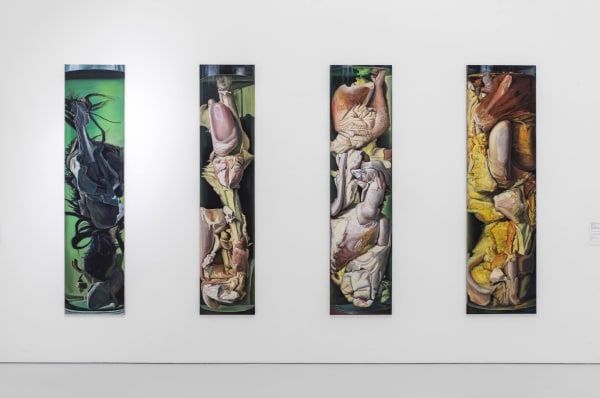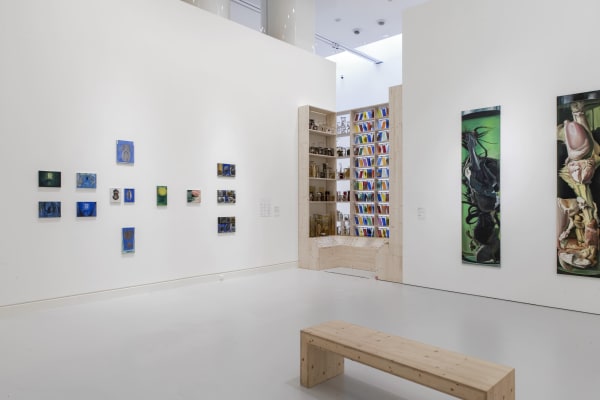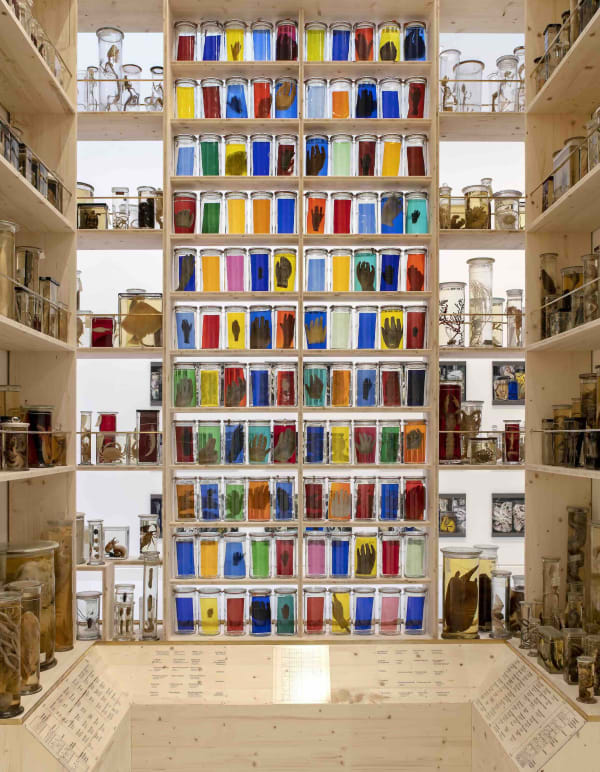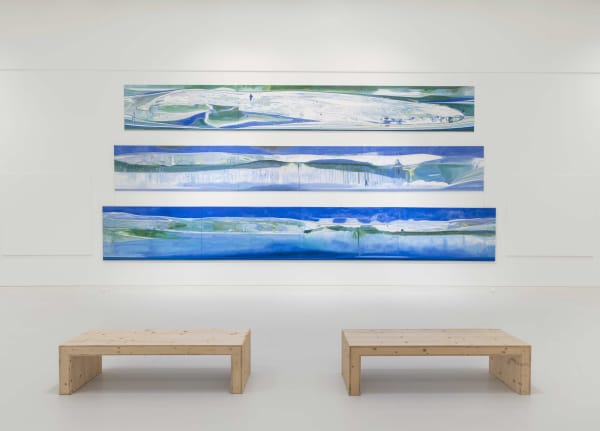Au milieu des années 1990, le peintre Stéphane Belzère (né en 1963), nourri de cultures française, suisse et allemande, décide d'installer son chevalet dans la salle dite des "Pièces Molles" du Museum national d'Histoire naturelle à Paris. C'est là le départ d'une aventure picturale qui durera jusqu'à aujourd'hui, au fil de laquelle l'artiste va habiter sa toile d'un motif récurrent, sinon obsessionnel : le bocal. Sujet de nombreuses variations, le bocal est accumulé, prodigieusement agrandi, traversé par le regard de l'artiste - y compris depuis l'intérieur du contenant - jusqu'à devenir un immense paysage indéchiffrable.
Invité à investir une salle du premier étage du MAMCS, le peintre engage ce faisant un dialogue avec les collections du Musée Zoologique de Strasbourg (temporairement fermé pour travaux) en réunissant une partie de la collection de bocaux renfermant notamment mammifères, reptiles, amphibiens, poissons ou invertébrés. Près de deux cents "flûtes" sont ainsi présentées dans l'exposition en regard des peintures et d'une installation conçue spécialement pour Strasbourg - "Les Mains des Anges" - œuvre participative et évolutive dans laquelle Stéphane Belzère "met en bocal" le moulage d'une main, en pleine complicité avec les jeunes visiteurs du musée.
Ces "Mondes Flottants" (dont le titre emprunte à l'art japonais de l'ukyo-e, littéralement "images du monde flottant", courant artistique caractérisé par l'introduction de sujets ordinaires dans une peinture encore très codifiée) oscillent entre plusieurs échelles et types de présentations qui les rendent tantôt très réalistes tantôt indéchiffrables. Dans chacun s'affirme un travail singulier sur la lumière, la couleur et la transparence. Le bocal, contenant ordinaire d'univers qui ne le sont pas, danse sur la frontière entre figuration et abstraction, entre attraction et répulsion, entre objet scientifique et source d'inspiration inextinguible pour le peintre.
Au sein d'une salle pensée comme une vaste parenthèse immersive au cœur du parcours des collections, "Mondes Flottants" est une exposition d'un genre nouveau dans l'histoire du MAMCS. Dialogue entre deux natures de collections différentes, elle offre au regard une confrontation entre une proposition contemporaine et un patrimoine scientifique qui viennent se compléter et s'éclairer réciproquement.
Cette exposition a été conçue sous le commissariat d'Estelle Pietrzyk, directrice du MAMCS, avec le conseil de Marie-Dominique Wandhammer puis de Samuel Cordier, directeurs du Musée Zoologique de Strasbourg.
